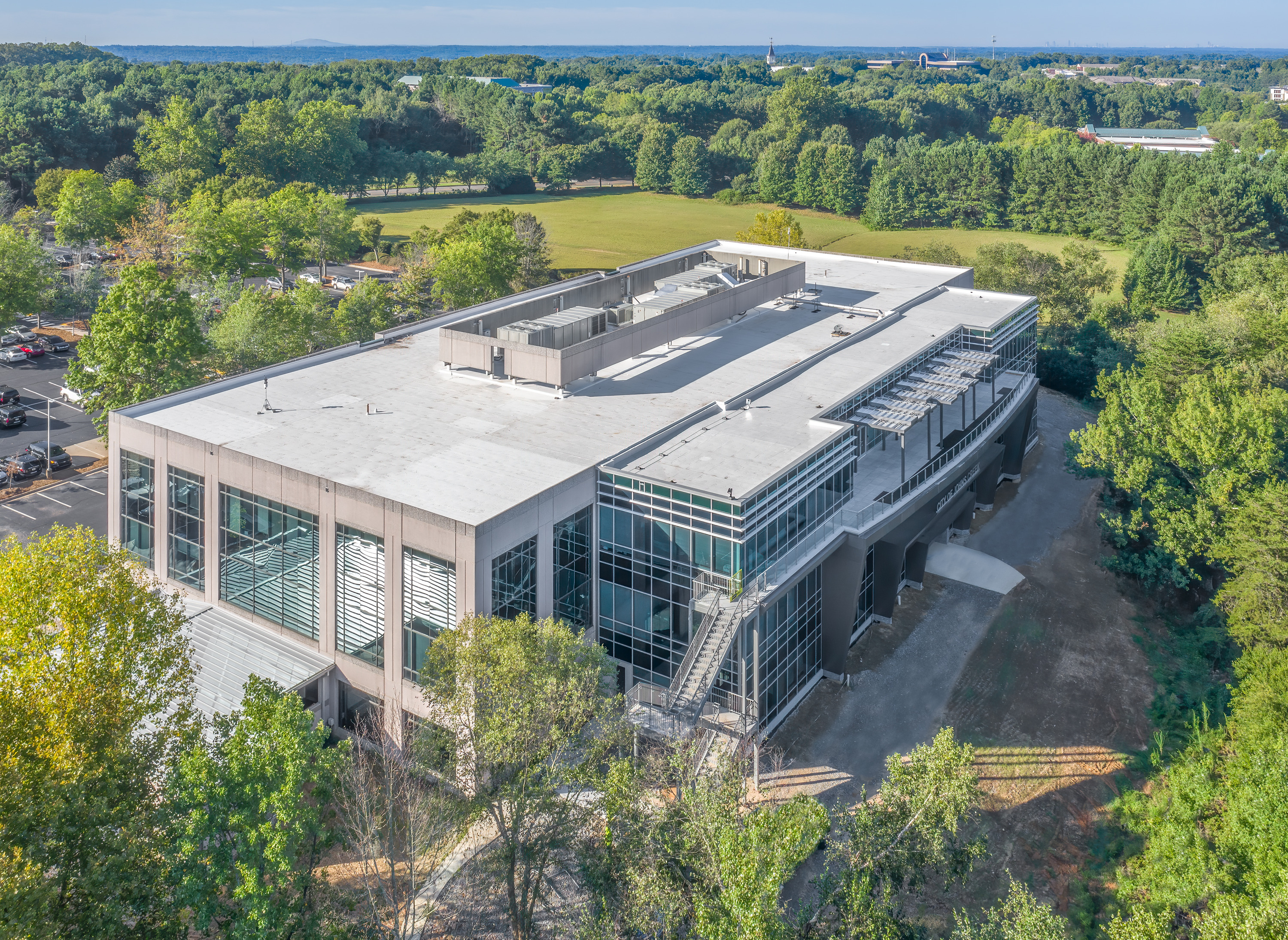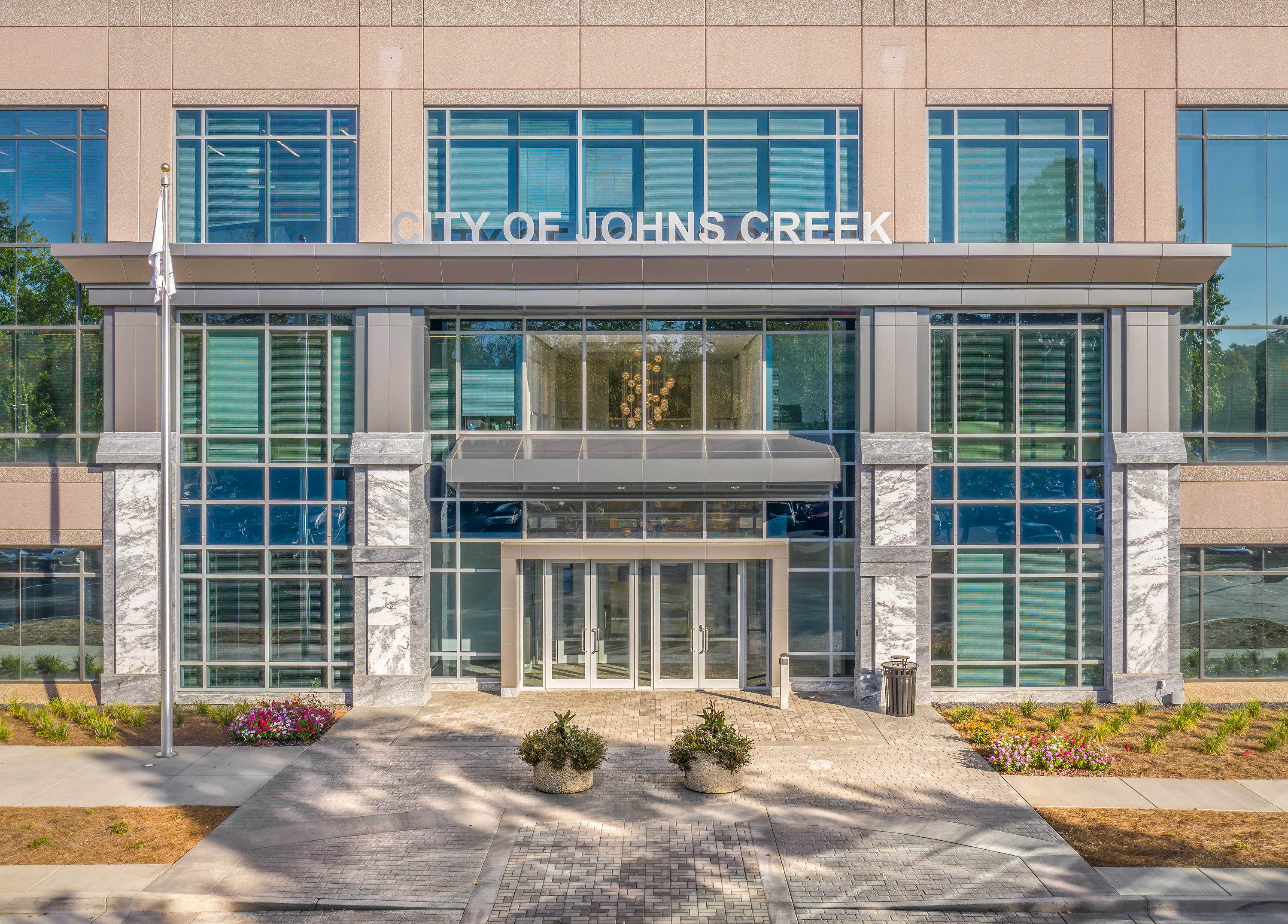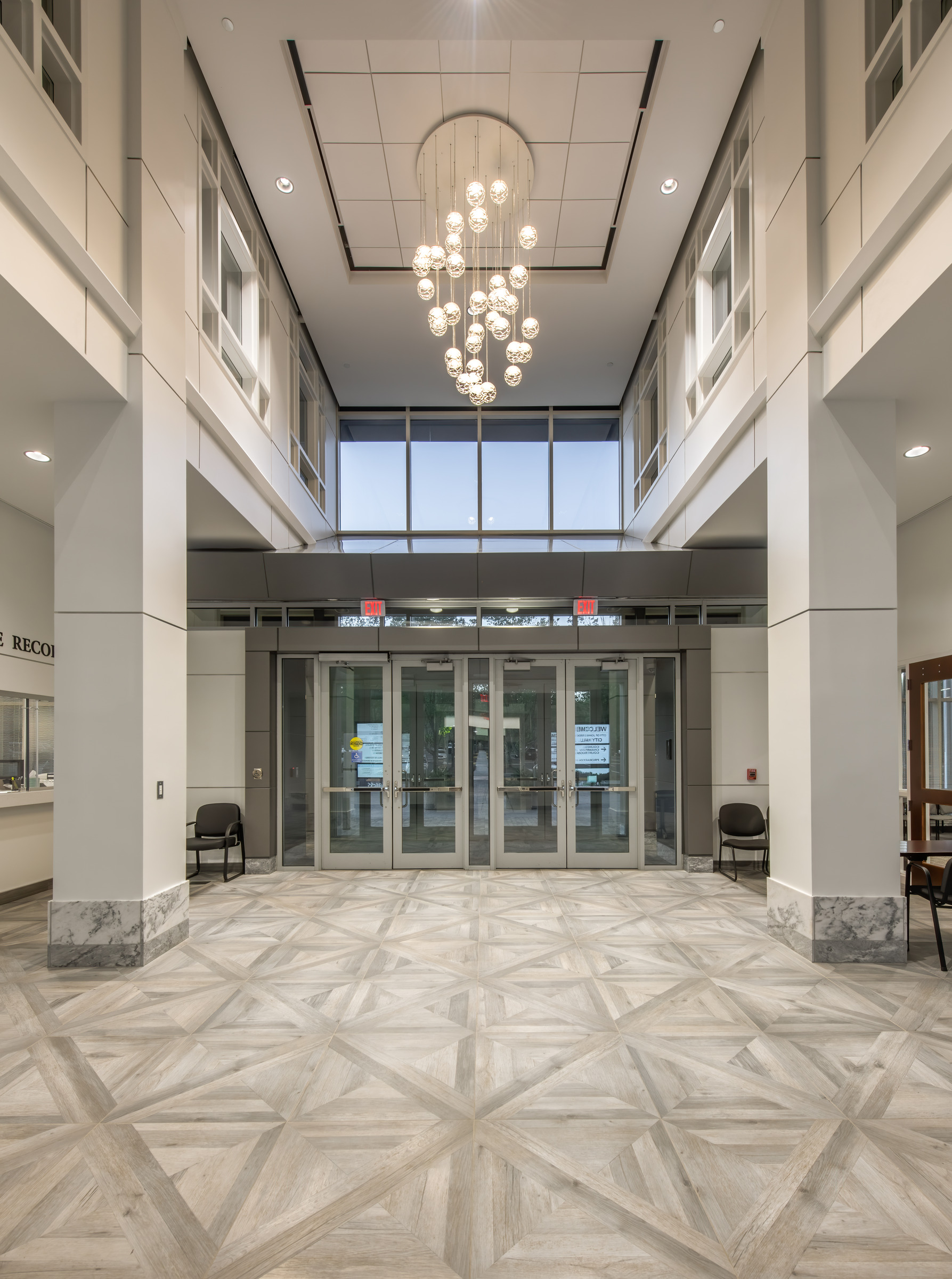Refined, Professional and Budget-Conscious
When the City of Johns Creek’s City Hall and public safety administration in Johns Creek, Georgia, began to outgrow their existing spaces, the city sought a solution that would best provide a unified center of operations and a financially responsible use of taxpayer funds.
After the city purchased a disused three-story office building, Balfour Beatty’s team joined the effort as an ally and Construction Manager at-Risk (CMAR) and provided the collaboration, technical expertise and operational efficiency to ensure the City of Johns Creek City Hall and Public Safety Complex could be completed on time, under budget and with lasting quality. 
Reduce, Reuse, Recycle
The City of Johns Creek spared no effort in seeking out the new City Hall property. After studying several nearby and similarly sized suburban cities that had recently built city halls and operational facilities, Johns Creek officials zeroed in on the unoccupied office building as both wise in its direct stewardship of public funds as well as its potential for longevity.
As “wise stewardship” was the city’s centering motto, it immediately became Balfour Beatty’s as well.
Under a collaborative CMAR contracting model, our team was empowered to become involved as early as possible. Close collaboration between a general contractor, design partner and client stakeholders is key to identifying opportunities for value engineering or scheduling efficiencies, and the earlier they can be identified, the greater their lasting impact.
 “Our team and architecture partner Clark Patterson Lee (CPL) quickly identified adaptive reuse, as well as reuse of multiple building materials, as an advantageous route to savings, both on the budget and the project schedule,” says Senior Project Manager Chris Gibson. “Our team leveraged our extensive re-use and upfit experience to determine that much of the existing structure, from fixtures to MEP systems, was in excellent condition and prime for rehabilitation.”
“Our team and architecture partner Clark Patterson Lee (CPL) quickly identified adaptive reuse, as well as reuse of multiple building materials, as an advantageous route to savings, both on the budget and the project schedule,” says Senior Project Manager Chris Gibson. “Our team leveraged our extensive re-use and upfit experience to determine that much of the existing structure, from fixtures to MEP systems, was in excellent condition and prime for rehabilitation.”
In addition to the best in lean and modern Virtual Design and Construction (VDC) practices like laser scanning for existing conditions, much of the re-use evaluation came down to good, old-fashioned legwork – physically walking the site and examining hardwood doors, hardware and more for their conditions. With more complex systems like HVAC units, an even closer look is necessary.
“Evaluating a disused HVAC system for its operational readiness is complex task, but our team gladly accepted the challenge to best generate savings for the city,” Chris adds. “By engaging an excellent trade partner in Shumate Mechanical, we conducted the rigorous testing to ensure the restored system was safe and not prone to immediate future issues for the city.”
In addition to HVAC and hardware re-use, the team also identified other design opportunities to generate value and savings for our client. On an exterior wall of the new construction area, state and municipal building codes required the addition of an emergency egress stairwell. The existing structure already contained one such stairwell, but it was essentially only serving as an architectural feature, fully enclosed with glass and metal cladding. 
The existing stairwell was beautiful, but expensive to replicate in the new construction, expensive to cool due to the glass enclosure’s greenhouse effect and altogether not in line with the City’s goal of responsible stewardship.
“Our team instead provided a much more value-conscious design, eliminating the glass enclosure and some unnecessary lighting in favor of an all-metal exposed stairwell,” Chris adds. “Our solution still matched the building’s refined and professional appearance, but was ultimately less wasteful, both in cost and energy, and more in line with the client’s mission.”
Phenomenal Phasing
Other than a general desire to reach project completion as early as possible, the City of Johns Creek was faced with another pressing issue. Some of the city’s employees were occupying rented satellite offices with soon-ending leases – and at different times.
“Our team worked hard to understand the difficult schedule constraints the city was dealing with, so we pulled out every stop to deliver a smooth transition into their new permanent offices,” Chris says. “With careful considerations for safety, we delivered the project and sought permits in phases that enabled partial occupancy.”
 This scheduling solution was greatly strengthened by the project’s overall scope itself, combining a ground-up addition with the existing building’s renovation. The team correctly expected the new construction to take longest, and thus accelerated some MEP re-use solutions to ensure the active construction area and now occupied renovations were safely partitioned, both in physical space and in clean air.
This scheduling solution was greatly strengthened by the project’s overall scope itself, combining a ground-up addition with the existing building’s renovation. The team correctly expected the new construction to take longest, and thus accelerated some MEP re-use solutions to ensure the active construction area and now occupied renovations were safely partitioned, both in physical space and in clean air.
“Construction debris and particulate can easily infiltrate an operating HVAC system, which could pose a health risk to anyone occupying the renovated space,” Chris adds. “Even as the HVAC evaluation and re-use was benefitting the overall budget, our team ensured that solution provided just as much benefit to the project schedule and our partial occupancy goals.”
Temporary and partial occupancy plans were even further necessitated by an uncharacteristically precipitous winter for the bulk of construction. The project experienced one of the wettest winters on record for the state, so in many ways, construction delays were unavoidable.
However, unavoidable but known conditions can be fully anticipated and planned around. Under a collaborative delivery model like CMAR, our team has the flexibility and client trust to mitigate schedule delays through creative phasing packages and selective reuse – solutions that may be priced out or simply not considered under a more traditional hard-bid contracting model.
Partners in Public Trust
When building vital public facilities, from health services administration centers to public schools to emergency operations centers, Balfour Beatty understands that our clients take their public investiture seriously.
Our teams proudly take ownership of that responsibility. We come alongside the mission of public stewardship with industry-leading lean practices, tech-enabled construction solutions and a client-first approach to collaboration that ensure accelerated schedules, reliable budgets and successful projects that better our communities.